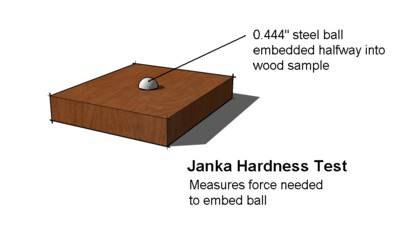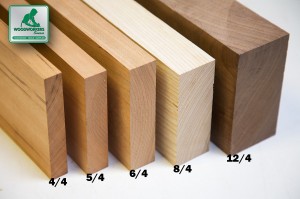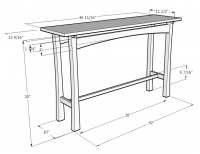
Spanish Cedar Hardwood Sample (1/2"x3"x6")
SKU: samples-spanish$8.00 ea.
48 U.S. Ground Service
Why Choose Spanish Cedar?
Straight-grained, wavy, curly and mottled grain. Soft with a moderately coarse texture. Easy on tools and cutters, but the low density and softness make it prone to splintering. Resembles mahogany at first glance. Milled Spanish cedar also contains an uncontrollable resin that seeps onto the surface.
Get your hands on a wood you've never tried before! It's simple. Samples are milled on all sides to the standard size of 1/2'' X 3'' X 6'', as determined by The International Wood Collectors Society, and include the shipping cost within the 48 U.S. Each one is labeled with the botanical and common names. Use these to test finishes and stains, to compare color and grain characteristics, etc.
| Thickness | 1/2" (≈ 1/2" approx) |
| Width | 3" |
| Length | 6" |
| Grade | Samples are milled on all sides, cut square and sanded; wood is a product of nature with inconsistencies from piece to piece. Use species samples as a guide, not a perfect representation. |
Woodworkers Also Recommend These
9pc Cutting Board Strips Assortment Kit - Walnut, Cherry & Maple - 1.75"x1.75"x18"
$130.00 $99.00
2.5
lbs /Bd. Ft.Wood Texture
Ease of Finishing
Light red or pinkish orange
May reach 100 feet in height with a buttressed trunk up to 72" in diameter. Bole may be 40-60 feet.
Brazilian cedar, British Guiana cedar, British Honduras cedar, Cedar, Cedre rouge, Cedro, Cedro oloroso, Cedro red, Central American cedar, Cigar box cedar, Epi, Guyana cedar, Honduras cedar, Jamaican cedar, Kapere, Mexican cedar
Cigar box lining, lead pencils, boat building, pattern work, furniture, doors.
The Joys of Building with Great Woods
Understanding hardwood lumber starts right here with these wacky fractions.
If you're expecting perfect clear lumber 100% of the time, you're in for a surprise. Here's a summary of the hardwood lumber grades and what to expect from them.
Board feet isn't your everyday kind of math, but these three simple steps make it easy to figure out your project.
Here's a handy (and free) Excel worksheet that helps you estimate the lumber needs for your project.
Are woods poisonous? Hazardous to use in cutting boards or baby cribs? Find out here.
Wood is like a sponge, and it's always in a state of absorbing or releasing moisture to stay equalized with its environment. The problem with that is it also swells and shrinks. Here's what you need to know to protect your project.















